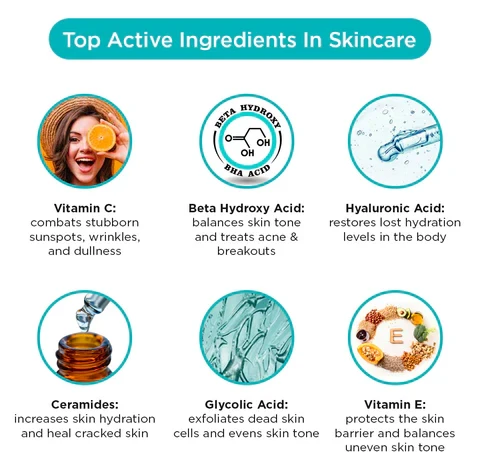How can i layer active ingredients safely?
How Can I Layer Active Ingredients Safely?
Layering active ingredients in your skincare routine can significantly improve your skin’s health, texture, and appearance. However, it must be done carefully, as combining the wrong ingredients—or using too many actives—can lead to irritation, dryness, or breakouts. The key to layering safely is understanding which actives work well together, which ones to avoid mixing, and how to apply them in the correct order.
What Are Active Ingredients?
Active ingredients are components in skincare products that directly address specific skin concerns, such as acne, aging, pigmentation, or texture. Common examples include:
-
Retinol (Vitamin A)
-
Vitamin C
-
Niacinamide
-
Hyaluronic Acid
-
Alpha Hydroxy Acids (AHAs) – like glycolic and lactic acid
-
Beta Hydroxy Acids (BHAs) – like salicylic acid
-
Peptides
-
Benzoyl Peroxide
General Rules for Layering
-
Apply from thinnest to thickest
Start with the most lightweight products (like toners or essences), followed by serums, then moisturizers, and finally oils or sunscreens. -
Water-based before oil-based
Water-based products penetrate more easily, so apply them first. Oil-based products can seal in moisture but may block other actives from absorbing if applied too early. -
Introduce actives slowly
If you’re new to using actives like retinol or acids, start with one at a time, using it 2–3 times per week and gradually increasing frequency as your skin builds tolerance.
Safe Ingredient Combinations
✅ Vitamin C + Vitamin E + Ferulic Acid
This antioxidant trio is highly stable and effective, especially in the morning. It brightens skin and protects against free radical damage.
✅ Niacinamide + Hyaluronic Acid
A perfect pair for soothing and hydrating. Niacinamide also helps reduce redness and supports the skin barrier.
✅ Retinol + Peptides
Retinol helps with cell turnover and aging, while peptides support collagen production. Together, they offer anti-aging benefits with less irritation.
✅ AHAs/BHAs + Hyaluronic Acid
Exfoliants like glycolic or salicylic acid can dry out the skin, so following them with hydrating hyaluronic acid helps replenish moisture.
Combinations to Use With Caution
⚠️ Retinol + AHAs/BHAs
Using both can cause excessive dryness, redness, and peeling. If you want both in your routine, use acids in the morning and retinol at night, or alternate days.
⚠️ Vitamin C + AHAs/BHAs
This combo can be irritating for sensitive skin. If you want to use both, apply Vitamin C in the morning and acids at night.
⚠️ Retinol + Vitamin C
Both are potent and can irritate sensitive skin when used together. If tolerated, use Vitamin C in the morning and retinol at night.
Tips for Safe Layering
-
Patch test new products before full use.
-
Listen to your skin—if it's red, flaky, or irritated, simplify your routine.
-
Hydrate and moisturize generously to maintain your skin barrier.
-
Use sunscreen daily, especially when using exfoliants or retinoids, as your skin becomes more sensitive to the sun.
Final Thoughts
Layering active ingredients can be highly effective—but it requires knowledge, patience, and balance. Start slowly, prioritize hydration and protection, and pay attention to how your skin responds. With the right combinations and proper care, you can safely enjoy the benefits of a well-formulated, multi-active skincare routine.

Related Blog
What Causes Oily Skin and Can It Be Managed Naturally? Exploring Root Causes and Gentle Solutions
Aug 2, 2025 by Admin
General
What Are the Signs That You Have Sensitive Skin? Key Symptoms to Help You Identify This Delicate Skin Type
Aug 1, 2025 by Admin
General